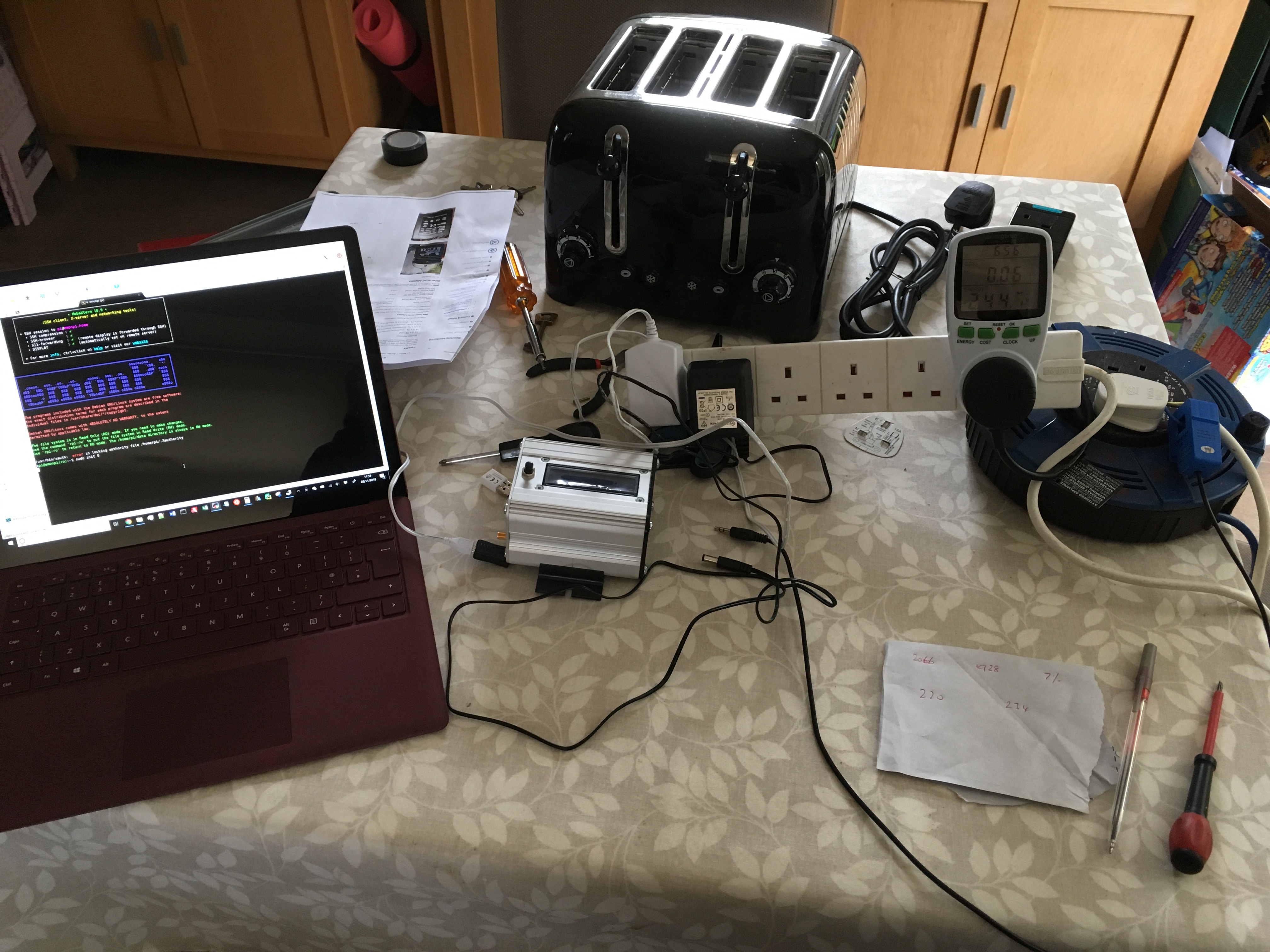Finally got around to this calibration malarky.
I was only able to test 1 clamp as the other is attached where I didn’t want to disturb, but test worked out ok.
If you remember, the other clamp (Solar) was always showing around 7% down on my Generation Meter at the end of each day.
So i’m not sure if I was surprised or not, but the energy display meter instantly showed around 6/7% higher than what was being shown from the emonPi on the first test.
In a way I was happy that two independent sources show a 7% difference.
I updated the values in the config file for both power1 and power2 to 1.06
Re ran the test by putting the toaster on and the figures were there or thereabouts.
So i’m happier now. I just need to monitor the results out of emonPi against the generation meter and the electricity export meter. After all, these are the two things that money is earned and charged against. I can always tweak slightly based on future results.
Thanks everyone for the help. 
